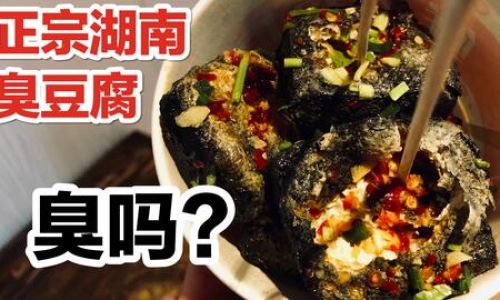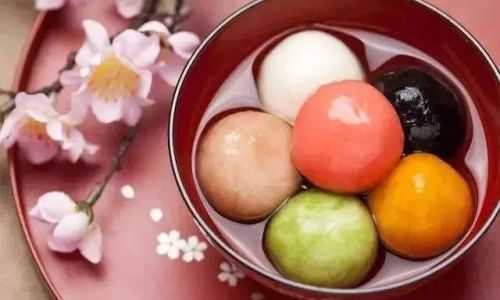Introduction
Stinky tofu, a fermented tofu dish renowned for its pungent aroma and complex flavor, is a beloved street food and home-cooked delicacy across Asia, particularly in China, Taiwan, and Southeast Asia. While its name might deter the uninitiated, those who dare to try it often find themselves captivated by its umami-rich taste and contrasting textures. The secret to elevating stinky tofu from “stinky” to “sublime” lies in mastering the cooking techniques that balance its bold fermented notes with complementary flavors. This article delves into the science, culture, and culinary craftsmanship behind preparing stinky tofu to achieve a dish that tantalizes the taste buds and converts skeptics into devotees.
The Science Behind Stinky Tofu’s Aroma and Flavor
Before diving into cooking methods, it’s essential to understand why stinky tofu smells and tastes the way it does. The fermentation process involves soaking tofu in a brine made from fermented milk, vegetables, meat, or shrimp, sometimes for months. This process breaks down proteins into amino acids, creating a savory, cheesy, and slightly sulfurous aroma. The key flavors include glutamates (umami), methional (cooked potato-like notes), and dimethyl trisulfide (a pungent, onion-like compound). When cooked correctly, these compounds mellow into a harmonious depth, while poor preparation can amplify off-putting odors.
Selecting the Right Stinky Tofu
Not all stinky tofu is created equal. The quality of the tofu and the fermentation process drastically impact the final dish. Look for tofu that’s firm but not overly dry, with a uniform beige or gray hue. Avoid varieties with excessive mold or a slimy texture. In Asia, fresh stinky tofu is often sold in brine at markets, but international buyers might need to rely on vacuum-sealed or frozen options. For the best results, opt for artisanal brands or prepare your own brine (see sidebar: Homemade Stinky Tofu Brine Recipe).

Cooking Methods to Enhance Flavor and Texture
Stinky tofu’s versatility shines through various cooking techniques, each offering a unique sensory experience. Here’s a breakdown of the most effective methods:
Deep-Frying: The Crispy Gold Standard
Deep-frying is the most common way to prepare stinky tofu, transforming its soft, fermented interior into a crispy, golden exterior. The high heat caramelizes the surface, mellowing the pungency while locking in moisture.
Technique:
- Preparation: Pat the tofu dry to prevent oil splatters. For extra crunch, coat lightly in cornstarch or rice flour.
- Oil Temperature: Heat oil to 350–375°F (175–190°C). Too low, and the tofu absorbs grease; too high, and the exterior burns before the inside heats.
- Frying Time: Fry for 3–4 minutes until golden. Avoid overcrowding the pan to maintain oil temperature.
- Draining: Place fried tofu on a wire rack (not paper towels) to preserve crispiness.
Flavor Pairings:
Serve with pickled vegetables, fresh cilantro, and a dipping sauce made from soy sauce, vinegar, chili oil, and minced garlic. For a Taiwanese twist, top with sweet sauce and crushed peanuts.
Pan-Frying: A Healthier Alternative
Pan-frying uses less oil and allows for more control over texture. The result is a chewier exterior with a slightly softer center.
Technique:
- Preparation: Slice tofu into 1-inch thick pieces. Lightly salt to draw out excess moisture.
- Pan Preparation: Use a non-stick skillet with a thin layer of oil. Heat over medium-high.
- Cooking: Fry for 4–5 minutes per side until golden. Press gently with a spatula to ensure even browning.
Flavor Pairings:
Pair with a garlic-ginger glaze or a spicy black bean sauce. Garnish with sesame seeds and scallions.
Steaming: Preserving Umami
Steaming is ideal for highlighting the tofu’s natural fermented flavors without adding fat. The method softens the texture, creating a silken interior.
Technique:
- Preparation: Place tofu in a heatproof dish. Add aromatics like ginger, garlic, or Shaoxing wine.
- Steaming: Steam for 10–15 minutes over boiling water. Avoid overcooking, which can make the tofu mushy.
Flavor Pairings:
Drizzle with chili oil, soy sauce, and a sprinkle of white pepper. Serve with steamed buns or rice.
Braising: Infusing Depth
Braising in a flavorful liquid (e.g., soy sauce, broth, or beer) imparts richness and tenderizes the tofu.
Technique:
- Preparation: Sear tofu in a hot pan to lock in flavors.
- Braising Liquid: Combine soy sauce, sugar, star anise, and water. Submerge the tofu and simmer for 20–30 minutes.
- Finish: Reduce the liquid to a glaze, coating the tofu.
Flavor Pairings:
Serve with fermented black beans, pickled mustard greens, or a fried egg.

Grilling: Smoky Charm
Grilling over charcoal adds a smoky dimension, balancing the tofu’s funkiness.
Technique:
- Preparation: Marinate tofu in a mixture of soy sauce, honey, and five-spice powder for 30 minutes.
- Grilling: Cook over medium heat for 4–5 minutes per side. Baste with marinade to prevent drying.
Flavor Pairings:
Top with grilled pineapple, fresh mint, and a squeeze of lime.
Mastering Marination and Seasoning
Marination is critical to tempering the tofu’s intensity. A good marinade should include acidic ingredients (vinegar, citrus), sweeteners (honey, sugar), and aromatics (ginger, garlic). For a 24-hour marinade, use a ratio of 1:1 soy sauce to water, plus 1 tbsp sugar and 2 cloves of garlic per cup of liquid.
Sauces and Condiments: The Finishing Touch
The right sauce can elevate stinky tofu from ordinary to extraordinary. Classic pairings include:
- Spicy Chili Oil: Combine Sichuan peppercorns, crushed red pepper, and toasted sesame seeds.
- Fermented Black Bean Sauce: Mash fermented black beans with garlic and Shaoxing wine.
- Vinegar-Based Dip: Mix rice vinegar, soy sauce, and a pinch of sugar.
Avoiding Common Pitfalls
- Overpowering Odors: Simmer tofu in a covered pot with ginger or lemon slices to neutralize smells.
- Soggy Texture: Always pat tofu dry before cooking and avoid overcrowding the pan.
- Uneven Cooking: Use a meat thermometer to ensure the interior reaches 165°F (74°C).
Cultural Context and Regional Variations
Stinky tofu’s preparation varies widely by region. In Taiwan, it’s often deep-fried and served with sweet sauce and pickled cabbage. In Shanghai, braised stinky tofu with pork belly is a winter favorite. For a modern twist, some chefs incorporate it into fusion dishes like stinky tofu tacos or truffle-infused dumplings.
Health Benefits and Nutritional Profile
Despite its reputation, stinky tofu is a nutritional powerhouse. Fermentation increases bioavailable protein, B vitamins, and probiotics. A 100g serving contains 12g protein, 8g fat, and 4g carbs, making it a balanced addition to meals.
Conclusion
Cooking stinky tofu is an art that rewards patience and experimentation. By understanding fermentation, selecting quality tofu, and mastering techniques like deep-frying, steaming, and braising, you can transform this polarizing ingredient into a dish that delights the senses. Whether you prefer it crispy, silken, or smoky, the key lies in balancing its boldness with complementary flavors. So, embrace the stink, and let your culinary creativity flourish.
Homemade Stinky Tofu Brine Recipe
- 8 cups water
- 1 cup fermented bean curd (chou doufu)
- ½ cup Chinese rice wine
- ¼ cup sea salt
- 3 star anise pods
- 1 cinnamon stick
- 1 tbsp Sichuan peppercorns
Combine ingredients in a pot, simmer for 20 minutes, and cool. Submerge tofu blocks for 3–7 days, depending on desired intensity.
Final Tip: For first-timers, pair stinky tofu with familiar flavors like fried rice or noodles to ease into its uniqueness. With practice, you’ll discover a dish that’s as addictive as it is adventurous.





0 comments